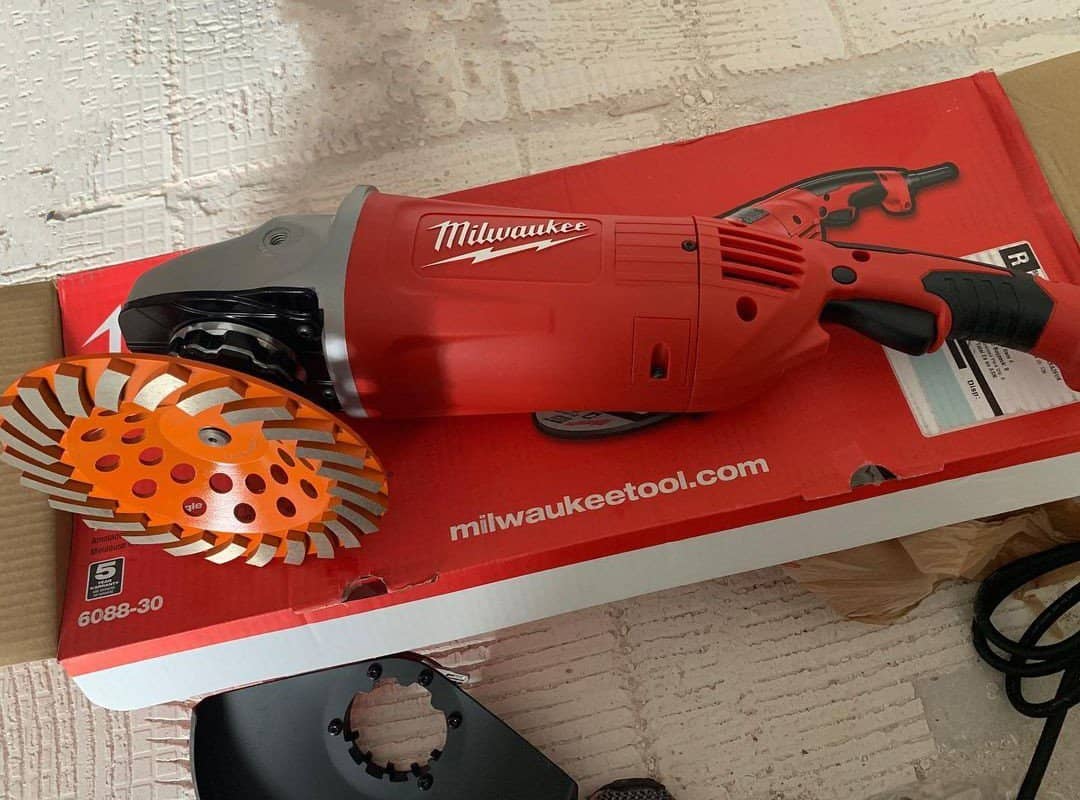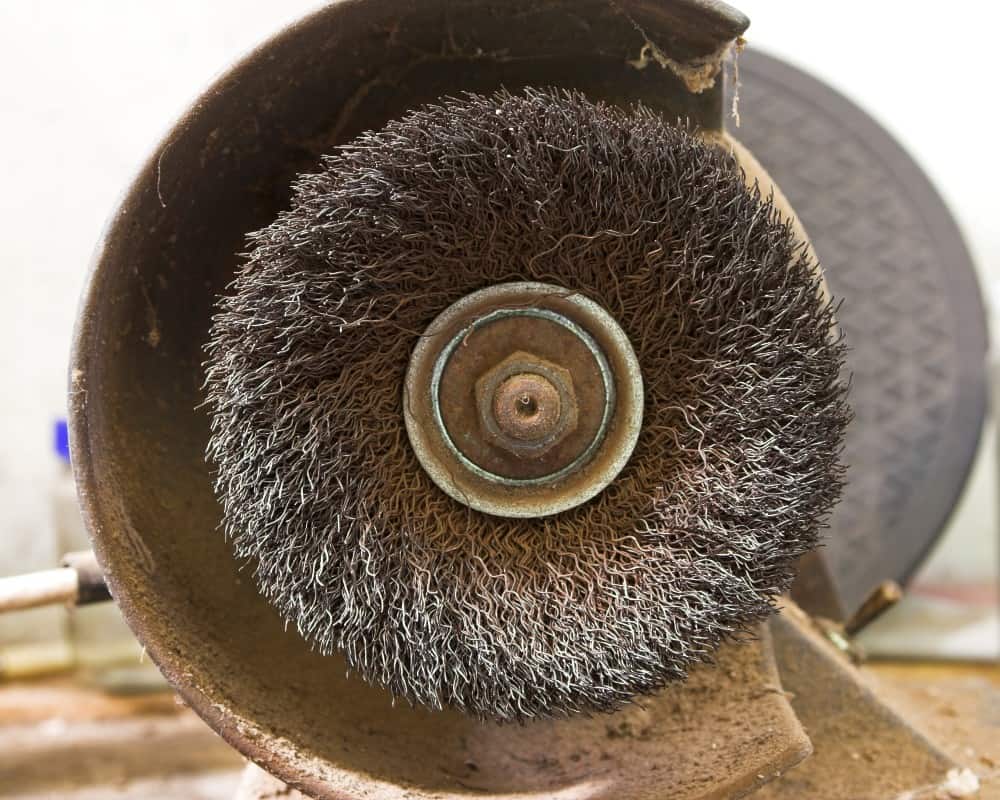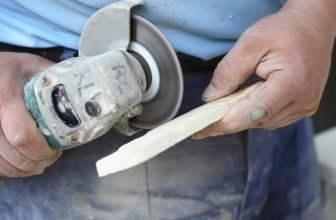How to Install Wire Wheel on Angle Grinder Professional Advice
A wire wheel on an angle grinder is a useful tool for grinding and polishing surfaces. It is most commonly used with an angle grinder, which is a powerful tool that has a motor and a rotating abrasive disc. Installing a wire wheel on an angle grinder is a fairly simple process. This article will provide step-by-step instructions on how to install a wire wheel on angle grinder with maximum efficiency and simplicity.
Here is a quick guide:
1. Put on safety glasses and gloves.
2. Attach the wire wheel to the angle grinder.
3. Secure the wheel with the grinder’s spindle nut.
4. Tighten the nut with an adjustable wrench.
5. Plug in the grinder and turn it on.
6. Hold the grinder firmly and move the wheel around the surface you want to clean.






Contents
How to Install Wire Wheel on Angle Grinder: Step-By-Step
An angle grinder is a versatile tool that can be used for a variety of tasks, including grinding, cutting, and polishing. One of the most common uses for an angle grinder is to install a wire wheel. A wire wheel on a grinder is a circular brush made from metal or nylon bristles. This type of wheel is ideal for removing rust, paint, and other debris from metal surfaces.
Step 1: Gather Supplies
Before you start, you will need to gather the following supplies:
- Angle grinder
- Wire wheel
- Safety glasses
- Work gloves
- Wrench
Step 2: Prepare the Area
Before you begin, make sure that the area you are working in is well-ventilated and free from flammable materials. Wear safety glasses and work gloves to protect yourself from flying debris.
Step 3: Remove the Protective Guard
The protective guard on the angle grinder can be removed by unscrewing the screws on either side of the guard. Once the guard is off, you should be able to see the disc and the spindle.
Step 4: Attach the Wire Wheel
Place the wire wheel onto the spindle of the angle grinder. Secure it in place by tightening the nut on the spindle with a wrench.
Step 5: Reattach the Protective Guard
Once the wire wheel is securely in place, reattach the protective guard. Make sure that it is properly aligned with the wire wheel before fully tightening the screws.
Step 6: Test the Setup
Before using the angle grinder with the wire wheel, it is important to test the setup to make sure that it is secure. Start the angle grinder at a low speed and observe that the wire wheel is spinning correctly.
Step 7: Clean Up
Once you have finished installing the wire wheel, make sure to clean up any debris that may have been created during the process. This will help to ensure that the area is safe and ready for use.
Installing a wire wheel on an angle grinder is a relatively simple process that can be completed in just a few steps. Make sure that you follow all safety precautions and properly secure the wire wheel before using the angle grinder. With the right setup and a little practice, you should be able to use the angle grinder and wire wheel to grind and polish surfaces with ease.
Wire Wheels Types
When choosing a wire wheel for your angle grinder, you will need to decide between a crimped wire wheel and a knotted wire wheel. Here are some of the key differences between these two types of wire wheels:
Crimped Wire
Crimped wire wheels are made with metal or nylon bristles that are crimped into place. This type of wheel is less likely to shed bristles than a knotted wire wheel.
Knotted Wire
Knotted wire wheels are made with metal or nylon bristles that are knotted into place. This type of wheel is more aggressive than a crimped wire wheel and is better suited for removing heavy rust or paint.
Both types of wire wheels can be used with an angle grinder. When choosing between the two, consider the task for which you will be using the angle grinder. If you need a more aggressive wheel for removing rust or paint, a knotted wire wheel may be the best option. If you need a wheel that is less likely to shed bristles, a crimped wire wheel may be the better choice.
FAQ
Can you put a wire wheel on an angle grinder?
Yes, you can install a wire wheel on an angle grinder. The wire wheel should be compatible with the size and type of the angle grinder. Make sure that the nut and the washer are securely tightened to the shaft of the grinder. Consult the manufacturer’s instructions for specific information about the installation process.
Does a wire wheel need a guard?
Yes, a wire wheel should be used with a guard. The guard should be large enough to cover the entire circumference of the wheel and should be secured tightly to the grinder. It is also important to make sure the guard is compatible with the grinder, as certain guards may not fit all models. You should also check with the manufacturer to make sure the guard is the right size and shape for your grinder.
How to change wire wheel on a Millwaukee angle grinder?

To change the wire wheel on a Millwaukee angle grinder, first ensure that the grinder is unplugged and the power switch is off. Next, use a flathead screwdriver to remove the lock nut located on the side of the grinder. Then, rotate the wire wheel counterclockwise to remove it. Finally, replace the wire wheel with a new one, and rotate it clockwise to secure it. Then, replace the lock nut and tighten it. And so your new wire wheel is installed.
Also read:
- What Is an Angle Grinder Used For?
- How to Grind Concrete With Angle Grinder?
- How to Sharpen Lawn Mower Blades With a Grinder?
Final Thoughts
Congratulations, you have now successfully installed a wire wheel on your angle grinder! Remember to always wear protective equipment, such as safety glasses, when using any power tool. With the proper safety precautions, you can now enjoy a variety of new applications and projects that require the use of a wire wheel.
I hope this guide was helpful and that you now have a better understanding of how to install a wire wheel on an angle grinder. Also, if you have any questions or comments, please feel free to leave them in the comments section below. Thanks for reading!
“A good tool stays with you for many years and choosing carefully ensures the job is done right, your work is neat, and the tool is always a pleasure to use”





